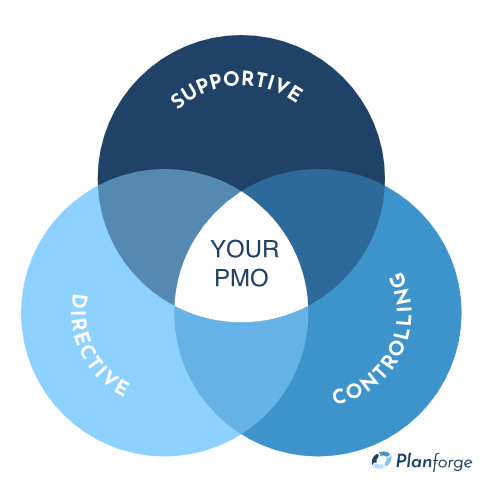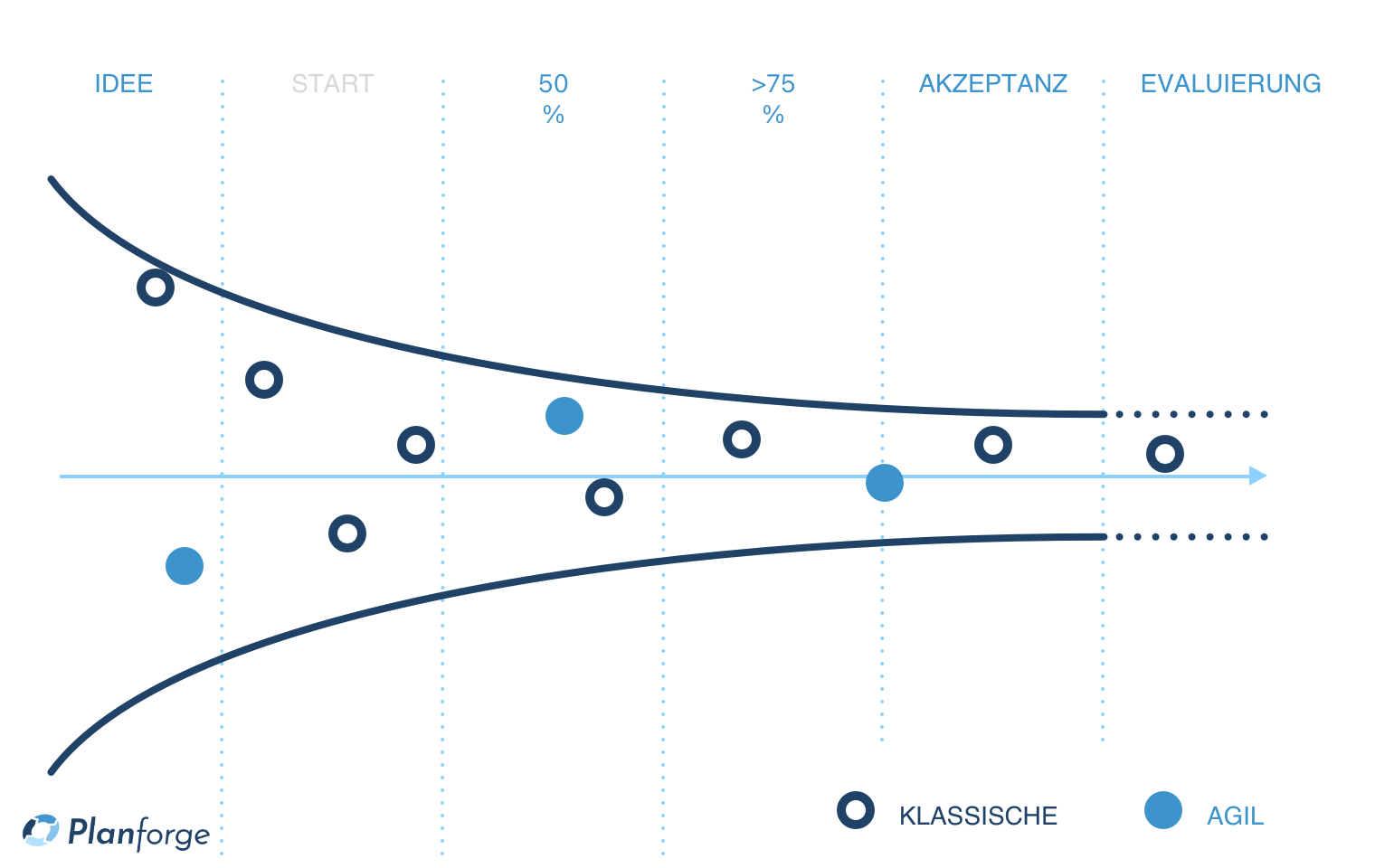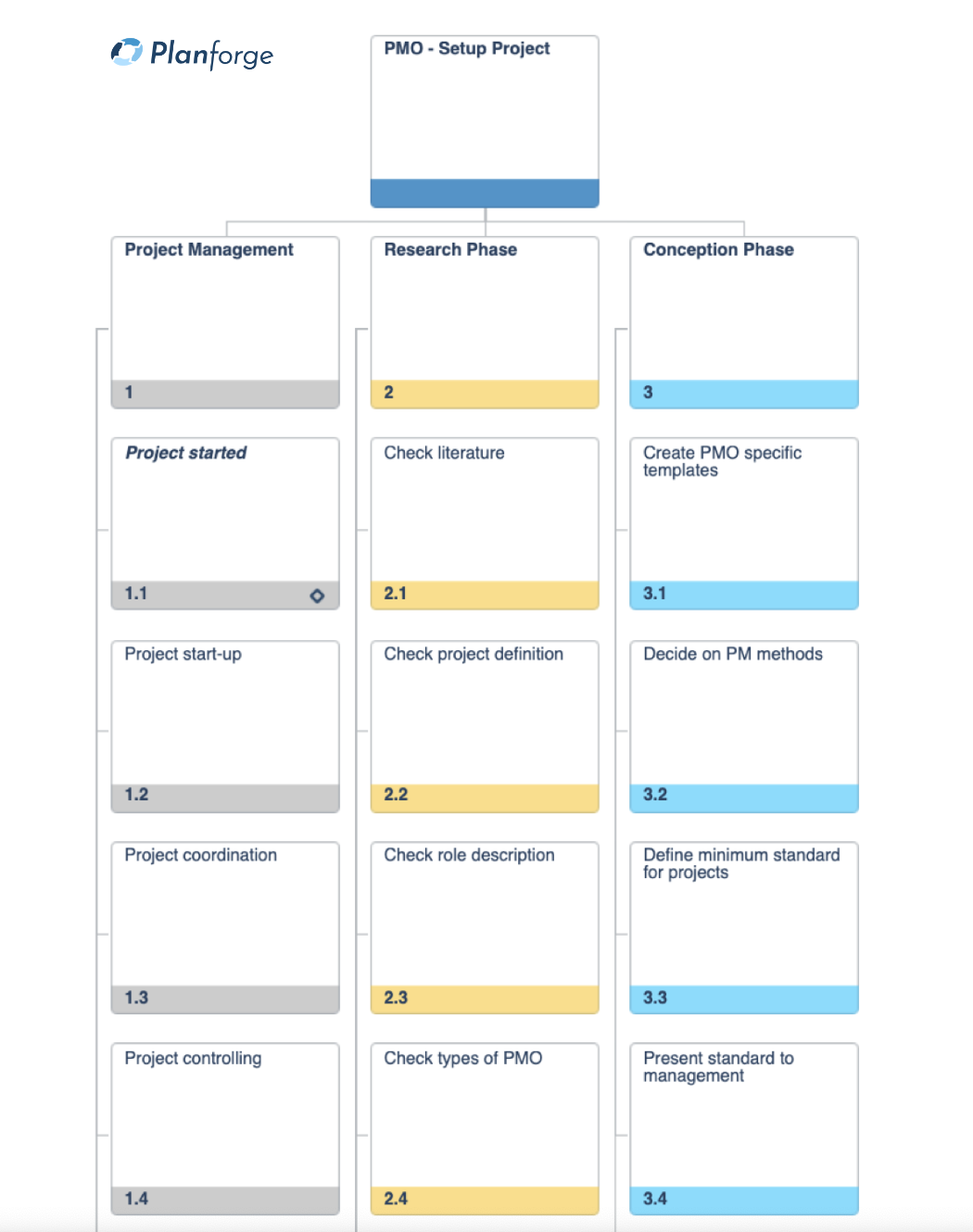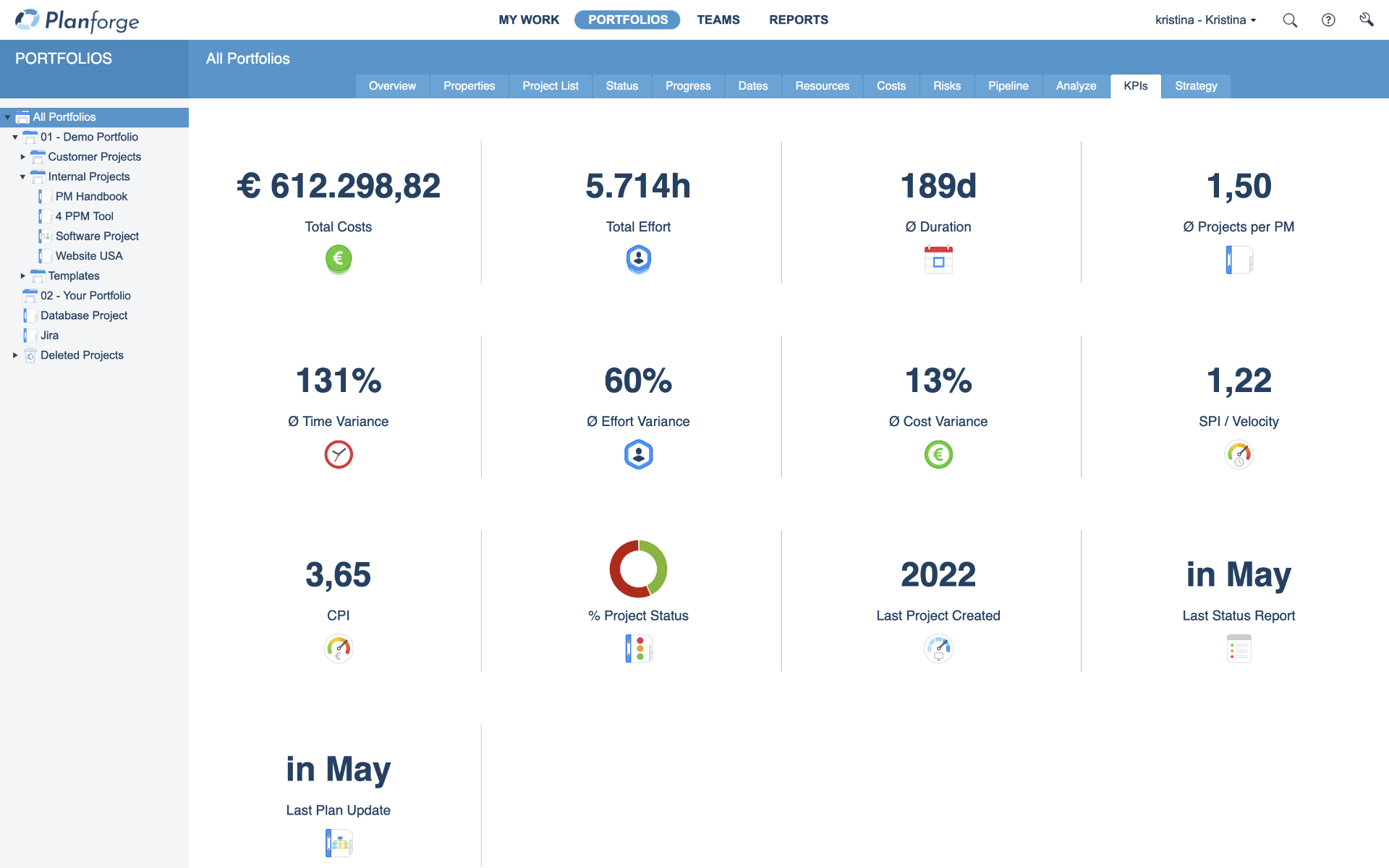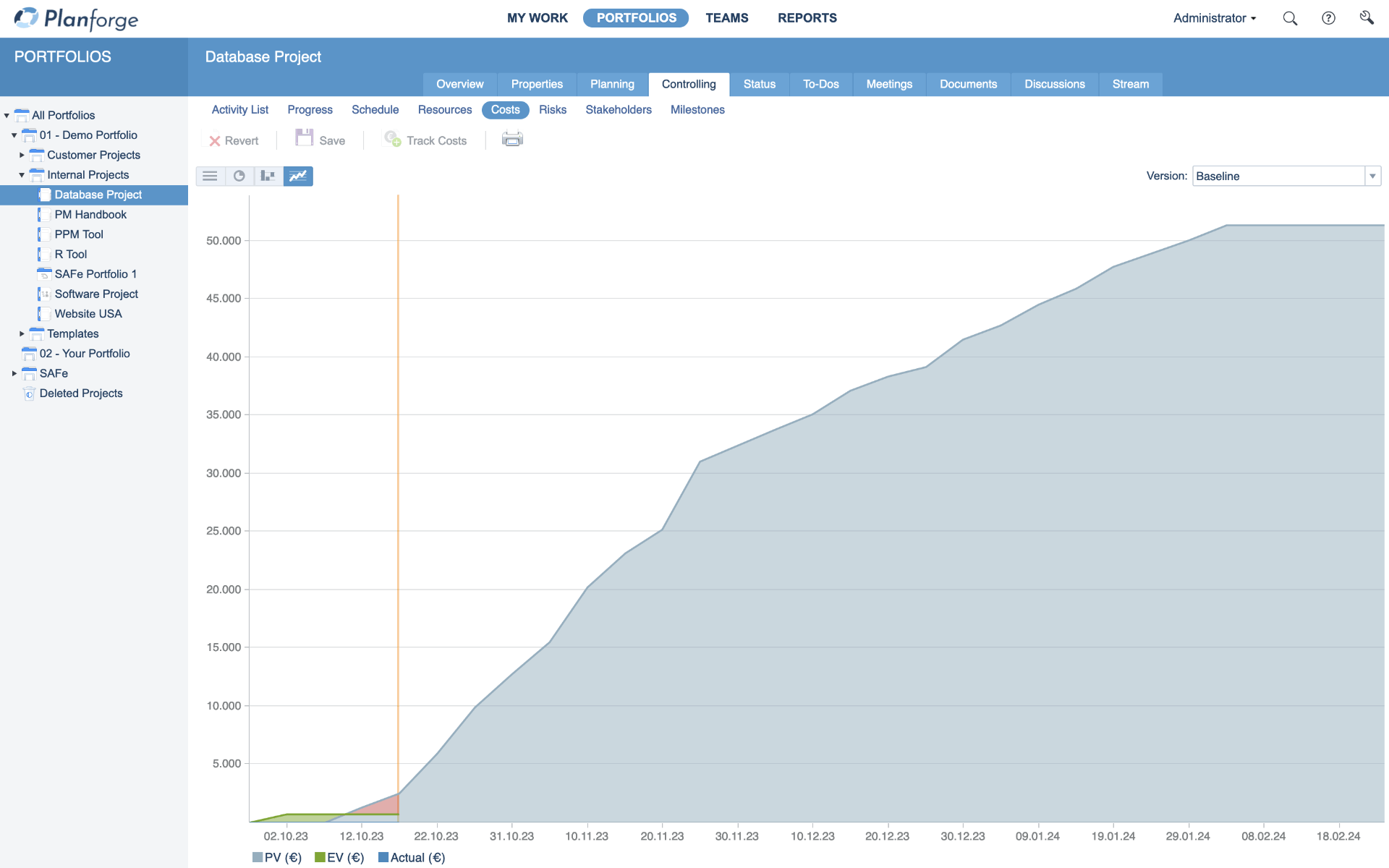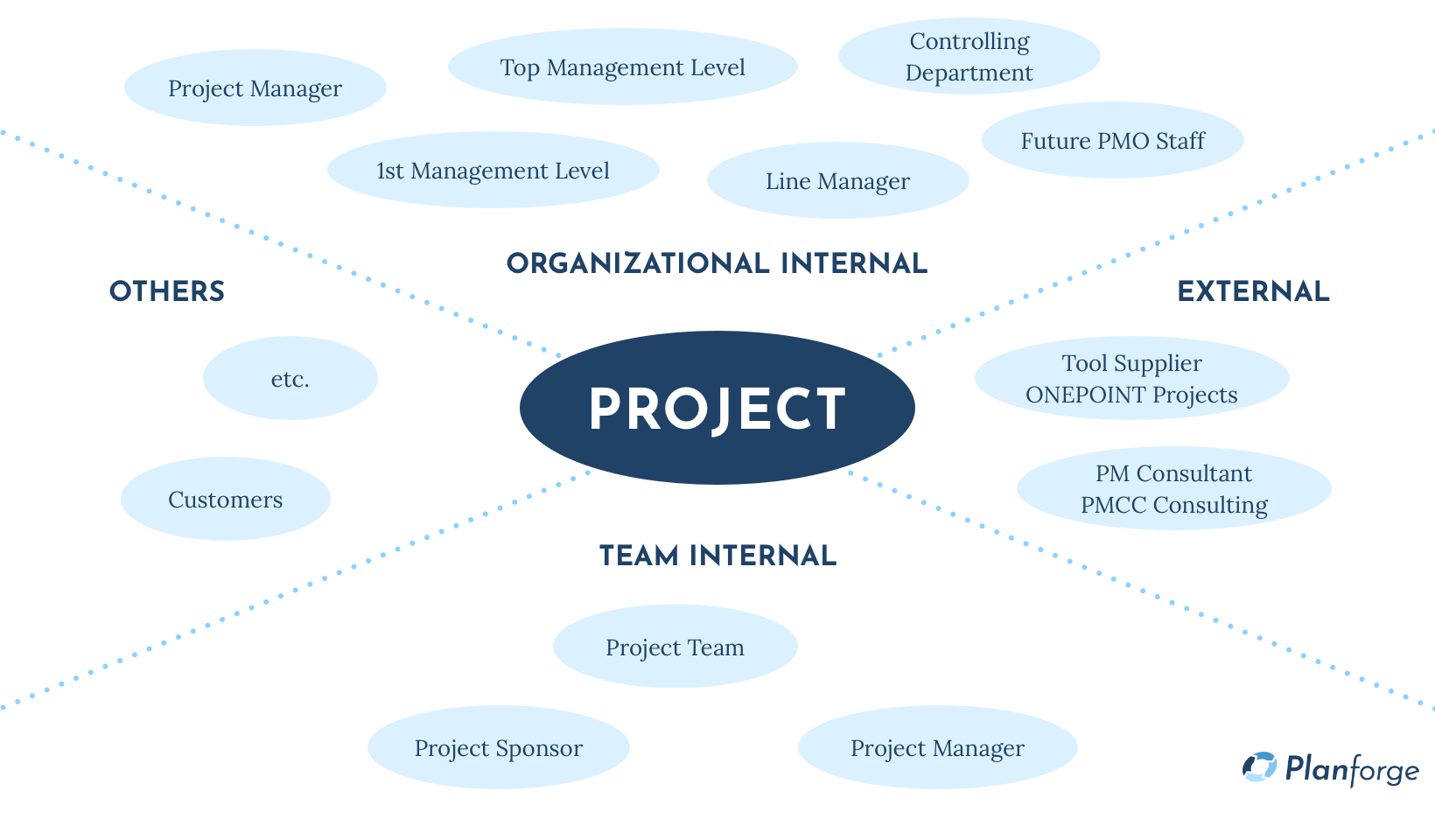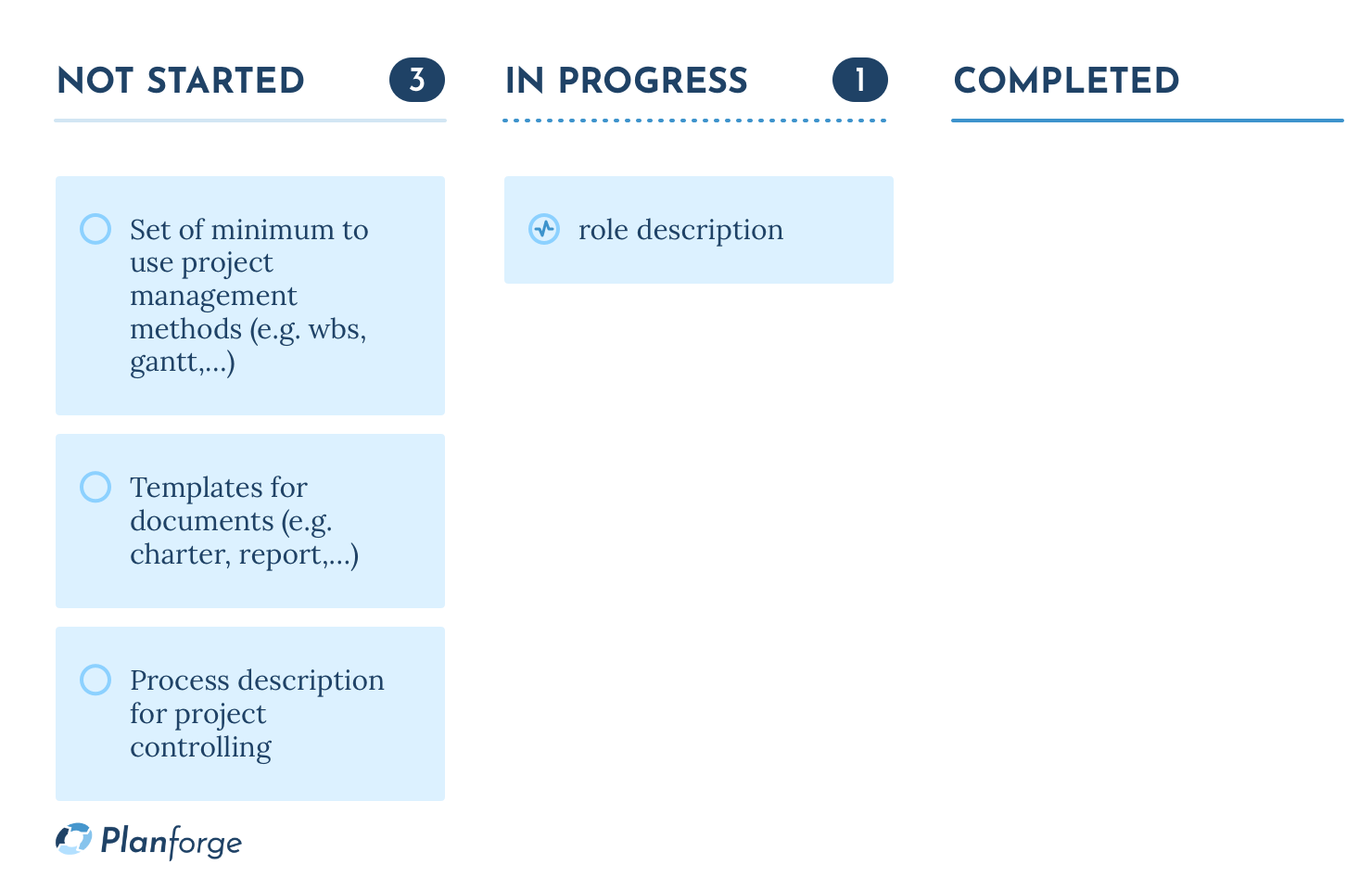Project Management Office Definition
The Project Management Institute (PMI) defines a Project Management Office (PMO) as:
An organizational structure that may be used to standardize the portfolio, program, or project-related governance processes and facilitate sharing of resources, methodologies, tools, and techniques.
In other words, a PMO defines and maintains the project management rules and guidelines, trains and supports your project managers, and is usually responsible for implementing PPM software to support everyday project work and portfolio reporting. PMOs are never part of a project but rather help keep processes alive and train project managers.
Why a PMO?
A Project Management Office (PMO) defines and maintains standards for all project-related activities. PMOs provide standardized methods for communication, documentation, scheduling, and reporting to ensure projects are delivered on time and meet the agreed-upon objectives.
PMOs are also effective at developing and enforcing processes that ensure the successful delivery of projects. They define best practices, standardize planning processes, and implement risk management solutions across all project portfolios.
Ultimately, PMOs bring clarity to any given project by providing guidance and direction to facilitate successful outcomes.
10 Steps to Set up a PMO
We developed the following ten steps to help you set up a PMO that fits your organization's needs, aligns with your business goals, and is designed to outlast significant organizational changes.
Let's get started!
Step 1: Decide on Your Type of PMO
The first thing you need to do is to decide which type of PMO you want to create. Based on this decision, you should make a vision statement and define specific and measurable goals for your PMO initiative.
You could use creative methods like Design Thinking or the Business Model Canvas. While coming up with specific ideas about your future PMO, you should also consider any possible risks and limitations regarding your future PMO's purpose and needs. Also, don't forget to relate these to your actual business needs.
The three common types of PMOs:
- Supportive: A Supportive PMO operates as a consultant or advisor. It is a knowledge center and a source of best practices, training, and lessons learned.
- Controlling: A Controlling PMO acts as an auditor and an advisor. In other words, it goes a further to ensure that best practices and standards are followed. It often also creates and maintains controls and governance standards.
- Directive: A Directive PMO is responsible for the execution of projects. Project managers report directly to the PMO rather than a separate function or team (such as a steering committee).
Note: You can always think outside the box: your ideal PMO could be a combination of two or even all three common types. So, let's get creative!
Step 2: Include Agile and Traditional/Waterfall Projects
Despite what some agile consultants preach, we see that although agile is everywhere, traditional/waterfall projects are not becoming extinct anytime soon.
The likely scenario in many organizations is that you will have to deal with agile and traditional/waterfall projects in a hybrid project portfolio.
Thus, you should try to find a setup for your project organization that supports all types of projects in your company or NGO. You do not want a "two-class" situation for different project
organizations.
This means the total support in your PMO should be available for agile and traditional/waterfall projects if you have this mix in your actual project landscape. The staff in your PMO must be able to support and coach all types of projects that are part of your entire portfolio.
From the tool perspective, you should select a future-proof PPM solution. Ideally, one that can cope well with both agile and traditional projects in a single portfolio.
You might also want to look at how you deal with straightforward projects that might not need a full agile or traditional setup. This is essential if you still want them to be part of your hybrid project portfolio to get a clear, consistent overview across all your projects.
Step 3: Focus on Quick Wins
Define "low-hanging fruits," i.e., small but easy to reach objectives in a short timeframe. Consider concrete deliverables that benefit a project or a project team.
The perspective on single project management can be the first step. If this setting is established, you can add multi-project / portfolio management topics to get a global overview and consider the traditional/ waterfall and agile necessities.
Focus on your company's decision-making target group to involve them in essential steps or decisions for your PMO initiative. With the portfolio overview, the upper/top management can now make strategic decisions on this level to support high-priority projects.
This helps you to decide on the following initiatives in your PMO. Focus on the future of your PMO and ask the top management if they have additional needs – lessons learned from various target groups are welcome!
Celebrate your quick wins. This will help in building commitment and encouraging morale while implementing these changes. Tool-wise, you want to limit the views and functionalities you expose to your early users.
Even an easy-to-use software solution can look complicated if too many aspects of a PPM tool are introduced simultaneously. Think about which views and functionality you need to support your current users.
At the same time, you should also consider rolling out your project management guidelines and PPM solution only to a defined pilot user group, e.g., for one department. This way, you can learn from this group's feedback and improve your guidelines and setup before rolling it out to the entire organization.
Step 4: Define Hybrid KPIs
Key Performance Indicators (KPIs) for projects and/or portfolios help to maintain a clear and consistent overview of projects. They create transparency regarding interactions with other projects and, most importantly, support the decision-makers to make informed and timely decisions.
KPIs further enable the comparison of different scenarios to show effects transparently based on interactions between projects. The set of KPIs you define must work for traditional as well as for agile projects. Fortunately, most established KPIs originating from traditional PPM also apply to agile projects (especially Scrum).
We have analyzed all KPIs defined by the PMI's PMBoK and found out that the Scheduled Performance Indicator (SPI) is the only KPI that cannot be used directly for Scrum projects. However, we believe it can be replaced with the classic Velocity defined by the Scrum framework because the calculation methods are quite similar.
How to define the correct KPIs
To get started, we suggest that (unless you already have a set of KPIs in mind) you initially go with established KPIs such as SPI/Velocity and CPI (Cost Performance Indicator based on Earned Value). Next, consider whether specific indicators to your company setup, processes, or business model could be of value and add your own KPIs as needed.
Defining a good set of KPIs is integral to setting up a successful PMO. Always think of KPIs like the ones in the Earned Value analysis that work for single projects and portfolios.
The progress is measured based on actual effort vs. effort-to-complete (or actual costs vs. cost-to-complete for costs) over time. All these values are available for both traditional/waterfall and agile projects (think sprint planning in terms of time).
Learn more about the earned value analysis
Tool-wise, it is essential to have quick access to your KPIs on the project and the portfolio level. Therefore, they should always be readily accessible – ideally in real-time. KPIs should also be reportable in reports, such as project lists and status reports.
Step 5: Communicate the Benefit
Focus on the organizational and the single project benefits in your journey to a successful PMO. Involve target groups in your considerations and communicate effectively with them. Do not focus on marketing buzzwords like "efficiency" or "KPI tracking"; instead, create an individual set of benefits for your organization.
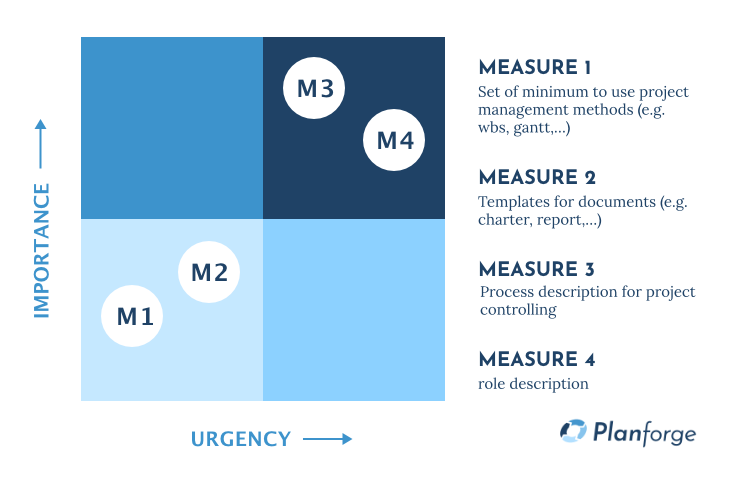 An Eisenhower Matrix for prioritizing measures
An Eisenhower Matrix for prioritizing measures
Make sure to visualize these benefits, for instance, in a roadmap. Make it very clear that you are setting this new PMO up to help your company or NGO succeed.
Step 6: Obtain Long-Term Achievement
Establishing a PMO will mean a significant, long-lasting change for the organization. It is essential to focus on change management and stakeholder engagement to ensure that people are committed to its long-term success. This organizational change must be aligned with the company's strategic goals and therefore become a part of the corporate strategy – otherwise, it will fail.
From a tool perspective, you ideally want a vendor who appreciates feedback and is interested in a long-term relationship. Users will be much more motivated to use the tool if their feedback is valued and sometimes built into the product. This, in turn, will ensure more up-to-date, higher-quality PPM data, leading to more informed and better decisions.
Step 7: Ensure Success Is Measurable
As already mentioned, the benefits of implementing a PMO need to be well-defined early on and communicated clearly. However, these benefits must also be measurable to be tracked and reported during the introduction and after the initial rollout.
A good way to achieve this is to define explicit "deliverables" for your project managers and PMO, such as, e.g.:
- A set of minimum project management methods must be used (e.g., project charter, WBS, Gantt-chart, resource plan, cost plan, etc.)
- Regular status reports as part of a standardized project controlling process.
- A set of role descriptions to help your organization set up a proper project organization.
- The required data to calculate the defined KPIs and the dashboards or reports for communicating these KPIs for single and multi-project management.
Of course, do not forget to communicate these deliverables' status to all relevant stakeholders regularly.
Step 8: Maintain Motivation
The implementation of any significant organizational change can be rocky. There are reasonable periods when things seem to be happening slowly or not at all.
During these times, it is vital to remain positive and keep stakeholders engaged and committed to the end goal. Note that the relevant stakeholders for traditional and agile projects can differ, so the information needs might also differ.
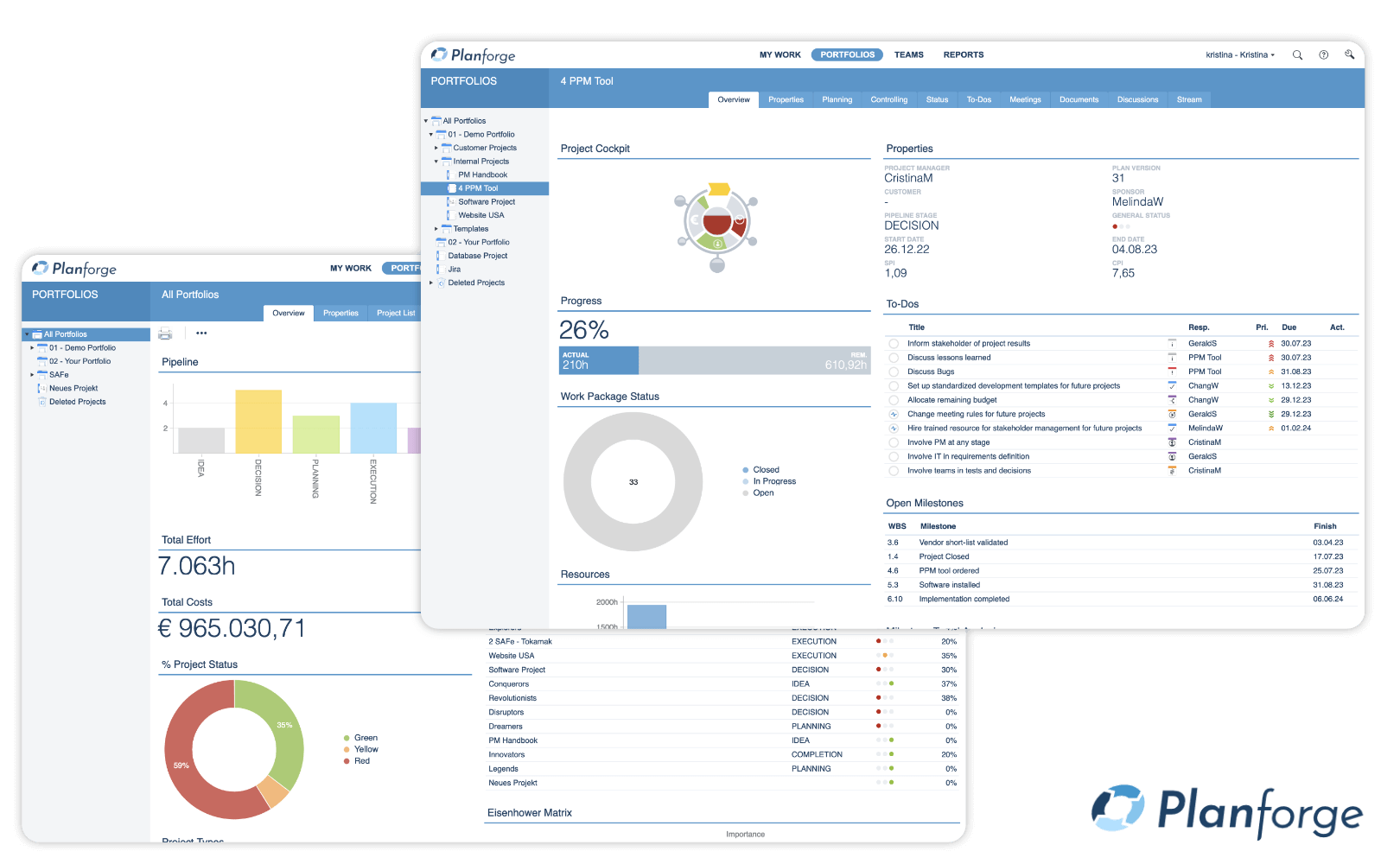 Fast access to information: project and portfolio dashboards
Fast access to information: project and portfolio dashboards
PPM tools can support this by offering usage statistics and/or usage-based KPIs that indicate how intensively users are using the tool and if the data is up to date.
Software-supported status reporting can provide a significant benefit here. It ensures that all project managers file status reports periodically (usually once per month). If the frequency and actuality of these status reports are, in turn, tracked via KPIs, you have got an excellent indicator for both usage and project status data quality.
Step 9: Keep Your PMO Flexible and Adaptive
As the business grows and changes, the PMO needs to adapt. For example, the PMO may start as a Supportive PMO but morph into a Directive PMO over time.
The same is true for your types of projects – even if you initially only have traditional projects, your PMO should be flexible enough to cover agile projects in the future.
The staff for your PMO can support this change in its organization and is open-minded towards being an active part of these changes in the future. This could, e.g., be a quarterly workshop researching and evaluating "new" methods or "modern" ideas that might benefit your organization. Some ideas that are not new but interesting could be, for instance:
- Hybrid project management -Business Model Canvas
- Design Thinking
- Kanban Board
- Lean management
- SAFe® - Scaled Agile Framework
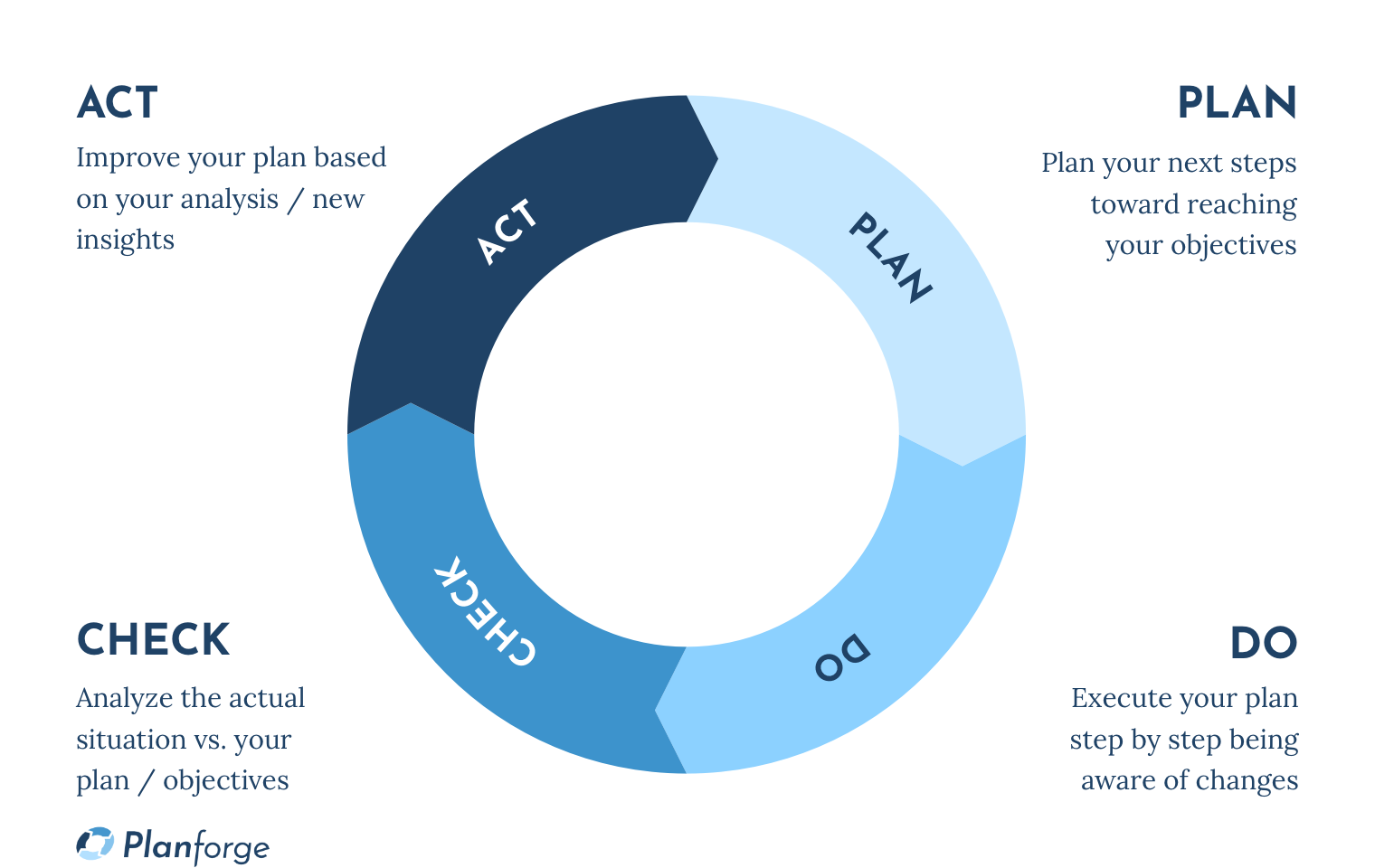 The comeback of the venerable PDCA cycle for PMOs
The comeback of the venerable PDCA cycle for PMOs
The PPM tool you choose should be flexible, too. It should adapt to your needs and be extensible. You want a tool to configure yourself and adjust to your current needs whenever necessary.
You do not want to bring in external consultants to implement simple changes. This is especially true for the reporting framework: the PPM solution should support adaptive built-in reporting possibilities and ideally be accessible via 3rd party reporting tools (business intelligence solutions).
Step 10: Make it a Project
Finally, setting up a new organizational unit (your new PMO) in a company or NGO is worth being a project. This project should find alignment with the governance, structure, and processes of the whole organization and fit into the strategy to justify the implementation of a PMO.
It is crucial to secure organizational buy-in before starting the realization effort. To ensure later success, move your key stakeholders into focus – both your internal supporters as well as your opponents:
"Keep your friends close, keep your enemies closer!"
- Develop a temporary project organization. Support this team with key players from different line organizations/departments later dealing with this project's result. The roles of the project sponsor, manager, and core-team members are mandatory .
- Define the boundary definition for traditional and agile projects.
- Develop a draft budget overview. Not only the needed resources but also the financial aspects should be part of your considerations.
- Display a realistic end date for the result and/or define some rough milestones (highlights and dates) for the roadmap.
Note that this can seem like a "chicken-egg" situation, as your project management processes are naturally not in place yet. But running the PMO setup like a project will help you validate your early decisions and keep your efforts on track and organized. This could be the situation to ask for support/coaching to get the best practice experiences from qualified project managers.
Conclusion: Your Successful Project Management Office
A functioning project management office is the cornerstone of a successful project organization.
— Gerald Aquila
We hope we could give you valuable tips or at least some food for thoughts on setting up your new PMO. Now it is up to you to take the next step.
Contact us if you want to support your PMO with a modern, hybrid PPM software.








 Jira
Jira
 Confluence
Confluence
 SAP
SAP
 API
API




